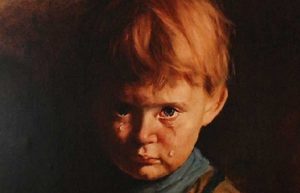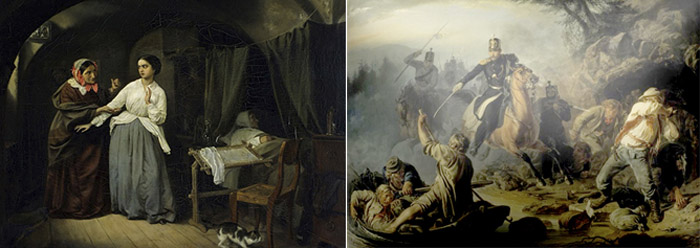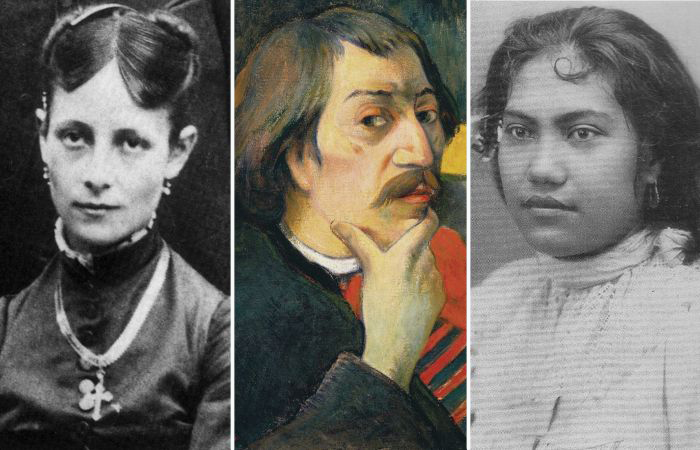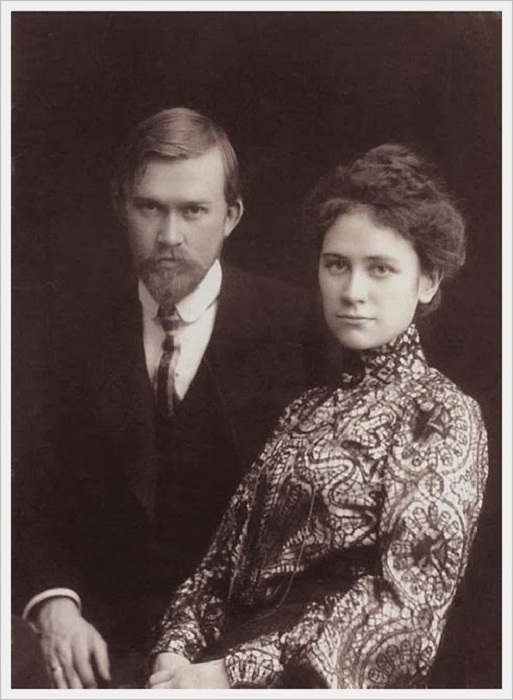The riddle and curse of the “Crying Boy”: Why Amadio was called the devil painter
 The Italian painter Bruno Amadio, who worked under the pseudonym Giovanni Bragolin, is considered to be the most dramatic and sinister artist in the history of art of the 20th century, who was called the devil painter. His name, in particular, is associated with a terrible story that terrifies many who have encountered his creation “The Crying Boy”, covered in a terrible legend, rumors and speculation.
The Italian painter Bruno Amadio, who worked under the pseudonym Giovanni Bragolin, is considered to be the most dramatic and sinister artist in the history of art of the 20th century, who was called the devil painter. His name, in particular, is associated with a terrible story that terrifies many who have encountered his creation “The Crying Boy”, covered in a terrible legend, rumors and speculation.
A few words about the artist
Bruno Amadio (Giovanni Bragolin) was born in 1911 and lived a fairly long life, leaving a number of art paintings that depict crying children. Despite the fact that the artist lived in the last century, very little information has been preserved about him. After his life, there were practically no personal photos left, he never gave interviews to journalists, art historians did not write their reviews about him. It is only known that in the war years he was a member of World War II, who fought on the side of Mussolini. At the end of the war he moved to Spain, and already there he changed his real name from Bruno Amadio to Giovanni Bragolin. Later he lived and worked in Venice, was a restoration artist.
During his creative career, the artist created a whole series of portraits, and more precisely – 65 works dedicated to crying children, which depict images of orphans. From their portraits “the eyes of little children full of tears, anger, despair, longing and pain look at their viewers, striking with their insecurity, touchingness and completely childish doom.” Knowledgeable people said that these are the faces of children from an orphanage that burned down during the war.
Oddly enough, portraits of Amadio’s crying children were very popular, of which reproductions were printed in large numbers and sold in large quantities through bookstore chains. And the artist captured the captured images of children on canvas in the original quite successfully for compassionate tourists. The most famous portrait from this series is “The Crying Boy”, which became not only the author’s calling card, but was officially recognized as the “damned picture” that bears misfortune to its owners, even in the form of reproductions.
History of the portrait
The legends associated with the painting “The Crying Boy” are more than enough. The most popular version says that the painting depicts the native son of Giovanni, although in fact nothing is known about his family. Nevertheless, according to this version, the artist’s son was a rather nervous, shy child. In particular, he was afraid of fire – tongues of flame in the stove, lighted candles and even matches. Therefore, in order to arouse a feeling of fear and horror in his son, his father set fire to matches in the face of the baby, achieving the desired emotion and believable children’s tears.
Thus, in his work on the portrait he achieved visual and psychological realism, in the genre of which he worked. And at the same time he brought his son to such despair and anger that, unable to bear the bullying, he shouted to his father to burn him down. No matter how unnatural this legend looks, however, it is quite easy to believe in it. One needs only to recall the father of the great Amadeus Mozart, who forced the young son to play music for 14-16 hours a day. And besides, if you delve into the history of mankind, there are not so few other evidences about despots-parents.
This version has a sad sequel, which partly diverges from reality. Soon, the boy, posing for his father, died of bilateral pneumonia, he literally burned out in a fever. A little later, a terrible fire broke out in the painter’s workshop. All of his paintings burned there, but only the ill-fated portrait remained untouched, it was not even covered with soot. Rumor had it that the charred corpse of Amadio himself was found in the room. However, this is already obvious speculation: it is known that in fact the artist died of cancer of the esophagus and this happened much later. But the picture “The Crying Boy” really did not suffer much. It was then that rumors spread that the “angry soul of the child had taken over the canvas and began to take revenge on the offenders.”
Another version of the creation of “The Crying Boy” says that the realist painter portrayed orphanages. Unhappy, desperate and ready to show their suffering to any kind person. So, in 1973, on one of the Venetian streets, he saw an artist as a little tomboy, an inhabitant of an orphanage, with a colorful appearance. The artist immediately persuaded him to pose for a picture. Soon after the portrait was over, the little boy died according to one version – under the wheels of a car, according to another – in a fire in an orphanage. And then – you guessed it, of course – a fire in the artist’s workshop, in which everything except the notorious portrait burned down.
However, there is another unconfirmed version, according to which the role of the tormentor of children is attributed to the artist. This conclusion of researchers is prompted by the fact that during the war Giovanni fought on the side of the Nazis, and it is likely that he could participate in experiments conducted on young children.



